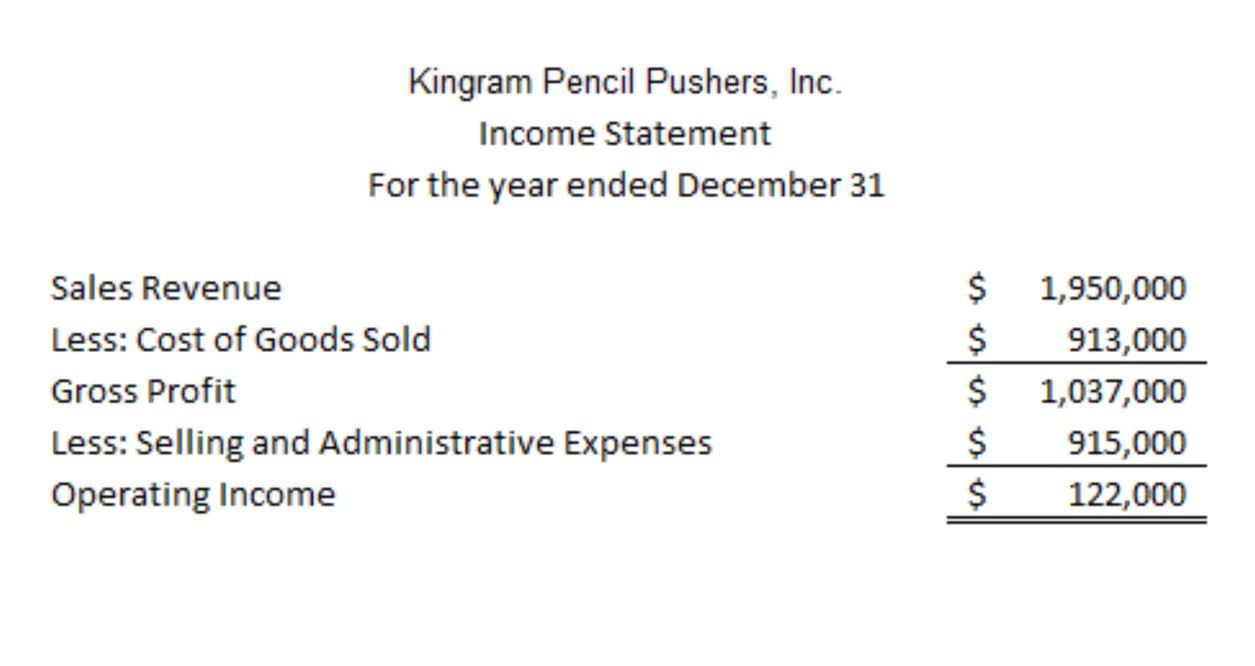
These costs are represented during a period of time and are not calculated into the cost of good sold. Nonmanufacturing costs consist of selling expenses, including marketing and commission expenses and sales salaries and administration expenses, such as office salaries, depreciation and supplies. The purpose of addressing these costs differently as part of a total manufacturing cost formula is based on the fact that they are accounted for differently when structuring the income statement and balance sheet.
General and Administrative Costs

Selling expenses include costs related to marketing, advertising, and distribution. For instance, a company might invest in digital marketing campaigns or hire sales personnel to boost product visibility and drive sales. These expenditures, while not part of the manufacturing process, are essential for generating revenue. These costs include the sales, administrative, and loan interest costs incurred by a business. Knowing both the manufacturing costs and nonmanufacturing costs allows an owner to accurately price a product to make a profit.
Product Costs
- Examples of general and administrative costs include salaries and bonuses of top executives and the costs of administrative departments, including personnel, accounting, legal, and information technology.
- The allocation and management of nonmanufacturing costs have a profound influence on a company’s financial statements, shaping both the income statement and the balance sheet.
- However, designers and sales personnel are considered nonmanufacturing labor costs.
- The amount of interest expense appearing on the income statement is the cost of the money that was used during the time interval shown in the heading of the income statement, not the amount of interest paid during that period of time.
- These costs are reported on a company’s income statement below the cost of goods sold, and are usually charged to expense as incurred.
The ISM views readings above 49 over time as generally indicating an expansion of the overall economy. The person creating the production cost calculation, therefore, has to decide whether these costs are already accounted for or if they must be a part of the overall calculation of production costs. Product costs are treated as inventory (an asset) on the balance sheet and do not appear on the income statement as costs of goods sold until the product is sold. If you want the advantage of knowing, tracking and understanding your costs, then check out the SMe Software website.
- This approach ensures that all expenditures are necessary and aligned with the company’s strategic goals.
- Nonmanufacturing overhead costs are the company’s selling, general and administrative (SG&A) expenses plus the company’s interest expense.
- While manufacturing or production costs are the core costs for a manufacturing entity, the other costs are also just as important as they too affect overall profitability.
- A lower per-item fixed cost motivates many businesses to continue expanding production up to its total capacity.
- Direct labor includes the production workers who assemble the boats and test them before they are shipped out.
- These expenses are period costs, meaning they must be expensed in the period in which they are incurred.
- Factory overhead – also called manufacturing overhead, refers to all costs other than direct materials and direct labor spent in the production of finished goods.
Part of cost of goods sold

For example, a small business that manufactures widgets may have fixed monthly costs of $800 for its building and $100 for equipment maintenance. These expenses stay the same regardless of the level of production, so per-item costs are reduced if the business makes more widgets. Manufacturing businesses calculate their overall expenses in terms of the cost of production per item.
- Instead these expenses are reported on the income statement of the period in which they occur.
- Investors and stakeholders can then make more informed decisions based on a comprehensive understanding of the company’s financial health.
- SMe Software’s manufacturing management software blog where we discuss the manufacturing industry news, keep up to date with happenings at SMe Software and our local area.
- By linking costs to these drivers, businesses can better understand the relationship between their activities and expenses, leading to more effective budgeting and resource allocation.
- In today’s manufacturing environment, when orders are filled in hours and days rather than weeks and months, it is critical for any enterprise to stay on top of these costs at all times.
Period Costs vs. Product Costs: What’s the Difference?
Inventory is a very significant current asset for retailers, distributors, and manufacturers. Inventory serves as a buffer between 1) a company’s sales of goods, and 2) its purchases or production of goods. Table 1.2 provides several examples of manufacturing costs at Custom Furniture Company by category. Direct labor – cost of labor expended directly upon the materials to transform them into finished goods. Direct labor refers to salaries and wages of employees who work to convert the raw materials to finished goods. Direct materials – cost of items that form an integral part of the finished product.
Direct Material Manufacturing Costs

Since they are not allocated to goods produced, these costs never appear in the cost of inventory on a firm’s balance sheet. Other examples of period costs include marketing expenses, rent (not directly tied to a production facility), office depreciation, and indirect labor. Overhead or sales, general, and administrative (SG&A) costs are considered period costs. SG&A includes costs of the corporate office, selling, marketing, and the overall administration of company business.
Direct labor manufacturing costs is determined by calculating the cost of employees directly responsible for producing the product. For example, a clothing manufacturer considers employees that dye the cloth, cut the cloth and sew the cloth into a garment as direct labor costs. However, designers and sales personnel are considered nonmanufacturing labor costs. Manufacturing costs refer to those that are spent to transform materials into finished goods. Product costs are costs that are incurred to create a product that is intended for sale to customers.
As the rate of production increases, the company’s revenue increases while its fixed costs remain steady. Therefore, the per-item cost of manufacturing falls and the business becomes more profitable. Mixed costs, which contain both fixed and variable components, nonmanufacturing costs add another layer of complexity. For example, a utility bill may have a fixed base charge plus a variable cost based on usage. By dissecting these mixed costs, businesses can better understand their cost structure and identify opportunities for cost savings.

This method provides a more granular view of where resources are being consumed, allowing for more precise cost management. Manufacturing costs initially form part of product inventory and are expensed out as cost of goods sold only when the inventory is sold out. Non-manufacturing costs, on the other hand, never get included in inventory rather are expensed out immediately as incurred. This is why the manufacturing costs are often termed as product costs and non-manufacturing costs are often termed as period costs. Nonmanufacturing costs are necessary to carry on general business operations but are not part of the physical manufacturing process.

Presentation of Manufacturing and Nonmanufacturing Costs in Financial Statements
The second highest cost on the income statement—selling and general and administrative expenses—totaled $22,800,000,000. These expenses are period costs, meaning they must be expensed in the period in which they are incurred. For a retailer, the product costs would include the supplies purchased from a supplier and any other costs involved in bringing their goods to market. In short, any costs incurred in the process of acquiring or manufacturing a product are considered product costs.